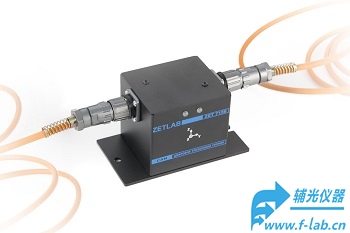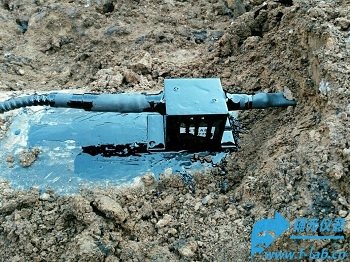-
-
数字短周期地震仪
数字短周期地震仪ZET 7156-VER.1用于各种结构的震动速度测量,比如高架(高架和限制性)和地下(基础、桩等)设施。数字短周期地震仪ZET 7156-VER.1集成到自动结构健康监测系统,控制和监视系统中。编号:FPZET-7156-VER.1价格:¥0.00数量:在线客服邮箱 info@f-lab.cn 服务热线 021-2279 9028 您也可网站留言或在线客服留言垂询,辅光仪器-规模型进口精密科学仪器供应商欢迎您! -
- 商品详情
数字短周期地震仪ZET 7156-VER.1用于各种结构的震动速度测量,比如高架(高架和限制性)和地下(基础、桩等)设施。数字短周期地震仪ZET 7156-VER.1集成到自动结构健康监测系统,控制和监视系统中。
地震仪由三个相同的传感元件和一个测量装置组成,传感元件接收三个低频机械振动,通过三个相互交叉的轴X,Y,Z并将它们转换为模拟信号。同时,测量模块对模拟信号进行数字处理,并通过CAN 2.0接口进一步传输处理后的数据,CAN测量系统同步机制允许对ZET 7156-VER.1地震仪进行自动同步,精度可达10微秒。
数字短周期地震仪ZET 7156-VER.1应用
数字短周期地震仪(检波器)用于自动结构健康监测系统中,以及用于控制建筑物的自振频率和相应的对数阻尼衰减。ZET 7156-VER.1数字短周期地震仪也可用于泄漏控制系统中,用于区段振动控制监测,以防止系统错误报警。
数字短周期地震仪ZET 7156-VER.1连接
数字短周期地震仪ZET 7156-VER.1在测量网络中依次连接,由此产生的测量结构通过ZET 7174接口转换器(CAN)连接到PC↔ USB),ZET 7176(控制器局域网↔ 以太网或Wi-Fi)。测量网络还可以补充GSM ZET 7177数字数据传输模块(can↔ GSM)如果以太网连接不可用或需要建立无线备份数据传输通道。
数字短周期地震仪ZET 7156-VER.1规格参数Metrological specifications Measured physical value vibration velocity Number of axes 3 (X, Y, Z) Frequency range from 0,05 up to 100 Hz Output values instant Measurement range from 0,0015 up to 50 mm/s Measurements error 10 % Intinsic noise level for: vibration velocity
vibration acceleration
vibration displacement
max. 05 μm/s max. 6 μm/s2
max. 0.2 μm
Real-time perfomance monitoring synchronization quality,
data qualityMeasurement reliability control sensing element integrity control,
measurement circuit controlTechnical specifications Data refresh rate 50, 100, 200, 500, 1000 Hz Amplification ratio 1, 8, 128 Sensor type integrated sensing element Data transfer interface CAN 2.0 Exchange speed 100, 300, 1000 kbps Operational specifications Dimensions 110×70,5×70,5 mm Dimenions of the mounting plate 129×70,5×3 mm Weight 500 g Device power from 9 up to 24 V Consumed power 0,5 W Operating temperature range for industrial version/ for explosion-proof version
from -40 up to +60 °C from -60 up to +85 °C
Electromagnetic compatibility EMC IEC 61000-4-2, ESD contact 4 kV, air 8 kV IEC 61000-4-4, EFT power supply 0,5 kV, signal 0,25 kV IEC 61000-4-5, Surge 500 V * Increase of amplification ratio leads to a proportional reduction of the digital seismometer’s measurement range








